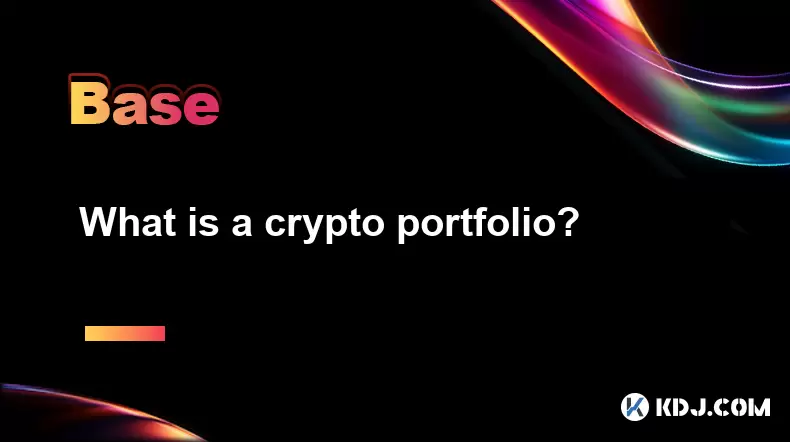-
 Bitcoin
Bitcoin $118400
0.39% -
 Ethereum
Ethereum $3814
2.17% -
 XRP
XRP $3.547
1.34% -
 Tether USDt
Tether USDt $1.000
0.00% -
 BNB
BNB $769.5
2.95% -
 Solana
Solana $191.7
6.36% -
 USDC
USDC $0.9999
0.01% -
 Dogecoin
Dogecoin $0.2722
7.75% -
 Cardano
Cardano $0.8995
5.59% -
 TRON
TRON $0.3158
-0.78% -
 Hyperliquid
Hyperliquid $47.37
4.46% -
 Stellar
Stellar $0.4848
3.54% -
 Sui
Sui $4.031
1.72% -
 Chainlink
Chainlink $20.11
3.94% -
 Hedera
Hedera $0.2832
3.16% -
 Avalanche
Avalanche $26.20
4.27% -
 Bitcoin Cash
Bitcoin Cash $530.5
0.67% -
 Shiba Inu
Shiba Inu $0.00001568
3.59% -
 Litecoin
Litecoin $118.4
1.42% -
 UNUS SED LEO
UNUS SED LEO $8.976
-0.23% -
 Toncoin
Toncoin $3.349
2.54% -
 Polkadot
Polkadot $4.590
2.54% -
 Uniswap
Uniswap $10.56
-0.59% -
 Ethena USDe
Ethena USDe $1.001
0.00% -
 Monero
Monero $327.7
0.39% -
 Pepe
Pepe $0.00001422
2.62% -
 Bitget Token
Bitget Token $4.973
-1.22% -
 Dai
Dai $1.000
0.02% -
 Aave
Aave $331.9
1.59% -
 Bittensor
Bittensor $429.6
-0.56%
What is a crypto portfolio?
A well-diversified crypto portfolio includes major cryptocurrencies like Bitcoin and Ethereum, along with altcoins, DeFi tokens, and NFTs, to balance risk and maximize potential returns.
Jul 21, 2025 at 01:28 pm

Understanding the Basics of a Crypto Portfolio
A crypto portfolio refers to a collection of various digital assets owned by an individual or institution. These assets typically include cryptocurrencies like Bitcoin (BTC), Ethereum (ETH), and a range of altcoins. Just like a traditional investment portfolio that may contain stocks, bonds, and real estate, a crypto portfolio is a strategic assembly of blockchain-based assets designed to meet specific financial goals. The composition of a crypto portfolio can vary widely depending on the investor’s risk tolerance, investment horizon, and market outlook.
Diversification is a key concept in building a crypto portfolio. Investors often spread their investments across multiple cryptocurrencies to reduce risk and potentially increase returns. This may involve allocating funds to large-cap, mid-cap, and small-cap cryptocurrencies, as well as exploring tokens from decentralized finance (DeFi) platforms, NFTs, or Web3 projects.
How to Build a Crypto Portfolio Step-by-Step
Building a crypto portfolio involves several critical steps that require research, planning, and execution. Here’s how to go about it:
- Define your investment goals – Determine whether you are investing for short-term gains, long-term growth, or passive income through staking or yield farming.
- Assess your risk tolerance – Understand how much volatility you can handle. This will influence your choice of assets, from stablecoins to high-risk altcoins.
- Research cryptocurrencies – Look into market capitalization, use cases, team background, and community support before investing.
- Allocate funds – Decide the percentage of your total investment to allocate to each cryptocurrency. A common strategy is to allocate more to established coins like Bitcoin and Ethereum.
- Choose a wallet and exchange – Select a secure wallet and a reputable exchange to buy and store your assets.
- Monitor and rebalance – Regularly review your portfolio and adjust allocations based on market conditions and performance.
Different Types of Crypto Assets in a Portfolio
A crypto portfolio can consist of a wide range of digital assets. Here are the most common types:
- Bitcoin (BTC) – Often considered digital gold, BTC is the most established and widely adopted cryptocurrency.
- Ethereum (ETH) – The leading platform for decentralized applications (dApps) and smart contracts.
- Altcoins – Refers to any cryptocurrency other than Bitcoin. Examples include Solana (SOL), Cardano (ADA), and Polkadot (DOT).
- Stablecoins – Cryptocurrencies pegged to fiat currencies like the US dollar (e.g., USDT, USDC) to maintain price stability.
- DeFi tokens – Tokens used in decentralized finance protocols, such as Aave (AAVE), Uniswap (UNI), and Compound (COMP).
- NFTs and Web3 assets – Non-fungible tokens and other assets that represent ownership in digital collectibles, virtual land, or metaverse projects.
Tools and Platforms for Managing a Crypto Portfolio
Managing a crypto portfolio effectively requires the use of specialized tools and platforms. These help investors track performance, analyze trends, and execute trades. Some popular options include:
- Portfolio tracking apps – Apps like CoinMarketCap, CoinGecko, and Delta allow users to monitor their holdings across multiple exchanges and wallets.
- Exchange platforms – Platforms like Binance, Coinbase, and Kraken offer portfolio dashboards and analytics tools.
- Crypto wallets – Wallets such as Trust Wallet and MetaMask provide built-in portfolio tracking features.
- Analytics dashboards – Advanced users may use platforms like Glassnode or Santiment for in-depth market data and insights.
Risks and Considerations in Crypto Portfolio Management
Managing a crypto portfolio comes with its own set of risks and challenges. Investors must be aware of the following:
- Market volatility – Cryptocurrencies are known for their price swings, which can lead to significant gains or losses in a short period.
- Regulatory uncertainty – The legal landscape for cryptocurrencies is still evolving, and changes in regulation can impact asset values.
- Security risks – Hacks, phishing attacks, and scams are prevalent in the crypto space. Using secure wallets and reputable exchanges is crucial.
- Liquidity issues – Some altcoins may have low trading volumes, making it difficult to buy or sell without affecting the price.
- Tax implications – Profits from crypto investments may be subject to capital gains tax, depending on jurisdiction.
Frequently Asked Questions (FAQs)
Can I include both crypto and traditional assets in a portfolio?
Yes, many investors maintain a mixed portfolio that includes both cryptocurrencies and traditional assets like stocks, bonds, or real estate. This approach allows for broader diversification and risk management across different asset classes.
How often should I rebalance my crypto portfolio?
The frequency of rebalancing depends on your investment strategy and market conditions. Some investors rebalance quarterly, while others do so monthly or after major market events. It's important to avoid over-trading and stick to a consistent strategy.
Are there tax implications for crypto portfolios?
Yes, in many jurisdictions, profits from cryptocurrency transactions are subject to capital gains tax. It’s essential to keep accurate records of all transactions and consult a tax professional to ensure compliance.
Is it safe to store all my crypto assets in one wallet?
It’s generally not recommended to store all your assets in a single wallet due to security risks. Using multiple wallets, including cold storage solutions, can help protect your investments from potential breaches or loss.
Disclaimer:info@kdj.com
The information provided is not trading advice. kdj.com does not assume any responsibility for any investments made based on the information provided in this article. Cryptocurrencies are highly volatile and it is highly recommended that you invest with caution after thorough research!
If you believe that the content used on this website infringes your copyright, please contact us immediately (info@kdj.com) and we will delete it promptly.
- Saylor, Trump, and Bitcoin: A New York Minute on Crypto's Power Trio
- 2025-07-22 00:50:12
- Strategy, Bitcoin, and $122,000: A New York Minute on Crypto's Latest Moves
- 2025-07-22 00:50:12
- Dogecoin Price Prediction: Will the Pump Continue?
- 2025-07-22 01:50:12
- AVAX Price, Mining Rewards, and PI Price: What's the Buzz?
- 2025-07-22 01:50:12
- AAVE, ONDO, XRP: Charting the Course for Altcoin Breakouts
- 2025-07-22 01:10:12
- Dogwifhat (WIF) Price Outlook: Will the Meme Coin Momentum Continue?
- 2025-07-22 01:15:12
Related knowledge

What is the difference between CeFi and DeFi?
Jul 22,2025 at 12:28am
Understanding CeFi and DeFiIn the world of cryptocurrency, CeFi (Centralized Finance) and DeFi (Decentralized Finance) represent two distinct financia...

What is the difference between a sidechain and a Layer 2?
Jul 20,2025 at 11:35pm
Understanding the Concept of SidechainsA sidechain is a separate blockchain that runs parallel to the main blockchain, typically the mainnet of a cryp...

What is the Inter-Blockchain Communication Protocol (IBC)?
Jul 19,2025 at 10:43am
Understanding the Inter-Blockchain Communication Protocol (IBC)The Inter-Blockchain Communication Protocol (IBC) is a cross-chain communication protoc...

How does sharding improve scalability?
Jul 20,2025 at 01:21am
Understanding Sharding in BlockchainSharding is a database partitioning technique that is increasingly being adopted in blockchain technology to enhan...

What is the "crypto trilemma" of scalability, security, and decentralization?
Jul 19,2025 at 06:28pm
Understanding the Concept of the Crypto TrilemmaThe crypto trilemma refers to the challenge of simultaneously achieving scalability, security, and dec...

What is a cliff and vesting schedule in tokenomics?
Jul 20,2025 at 10:28am
What Does a Cliff Mean in Tokenomics?In tokenomics, a cliff refers to a specific period during which token holders are not allowed to access or transf...

What is the difference between CeFi and DeFi?
Jul 22,2025 at 12:28am
Understanding CeFi and DeFiIn the world of cryptocurrency, CeFi (Centralized Finance) and DeFi (Decentralized Finance) represent two distinct financia...

What is the difference between a sidechain and a Layer 2?
Jul 20,2025 at 11:35pm
Understanding the Concept of SidechainsA sidechain is a separate blockchain that runs parallel to the main blockchain, typically the mainnet of a cryp...

What is the Inter-Blockchain Communication Protocol (IBC)?
Jul 19,2025 at 10:43am
Understanding the Inter-Blockchain Communication Protocol (IBC)The Inter-Blockchain Communication Protocol (IBC) is a cross-chain communication protoc...

How does sharding improve scalability?
Jul 20,2025 at 01:21am
Understanding Sharding in BlockchainSharding is a database partitioning technique that is increasingly being adopted in blockchain technology to enhan...

What is the "crypto trilemma" of scalability, security, and decentralization?
Jul 19,2025 at 06:28pm
Understanding the Concept of the Crypto TrilemmaThe crypto trilemma refers to the challenge of simultaneously achieving scalability, security, and dec...

What is a cliff and vesting schedule in tokenomics?
Jul 20,2025 at 10:28am
What Does a Cliff Mean in Tokenomics?In tokenomics, a cliff refers to a specific period during which token holders are not allowed to access or transf...
See all articles

























































































